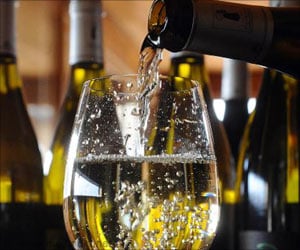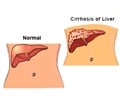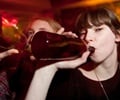Alcohol is ingrained in our culture, and binge drinking is perceived as a lighthearted, fun and humorous rite of passage among college students.

‘Alcohol abuse, binge drinking in particular, is thought to be a rite of passage for college students; but in reality it's a very serious health epidemic in the United States.’





"Alcohol abuse, binge drinking in particular, is thought to be a rite of passage for college students; but in reality it's a very serious health epidemic in the United States," said Peter Hendricks, Ph.D., associate professor at the University of Alabama at Birmingham School of Public Health Department of Health Behavior. "It is important to understand what alcohol is, why it's problematic, and what a person can do to minimize the risk should they choose to drink." Understanding alcohol
Moderate drinking, as defined by the National Institute on Alcohol Abuse and Alcoholism, is no more than one drink per day for women and no more than two drinks per day for men, translating to seven or fewer drinks per week for women and 14 or fewer drinks per week for men. A standard drink is a 12-ounce beer, 8-ounces of malt liquor, a 5-ounce glass of wine or a 1.5-ounce shot of liquor.
Binge drinking, which is especially problematic, is four drinks in two hours for women and five drinks in two hours for men. More than one-third of college students engage in binge drinking monthly.
"Alcohol leads to impulsive decisions and can be addictive," Hendricks said. "Even though it's legal for those 21 years of age and older, college students should be aware of the dangers of drinking alcohol."
Advertisement
Megan McMurray, clinical psychology intern at UAB, notes that drinking alcohol in excess is dangerous and can quite easily lead to death. Overdose of alcohol can occur when a person has blood alcohol content sufficient to produce impairments that increase the risk of harm. Age, drinking experience, gender, the amount of food eaten and even ethnicity can influence BAC. Critical signs and symptoms of alcohol poisoning include: Confusion, Vomiting, Seizures, Slow breathing, Irregular breathing, Hypothermia.
Advertisement
McMurray explained further, "When BACs get even higher, amnesia or blackouts occur. If a person has signs of alcohol poisoning, it is very dangerous to assume that an unconscious person will be fine by sleeping it off."
Alcohol acts as a depressant, impairing basic bodily functions, such as the gag reflex, leaving people vulnerable to choking on their own vomit and dying in their sleep. Alcohol can also irritate the stomach, making the suppression of the gag reflex especially problematic.
Furthermore, on a national level, 696,000 students between the ages of 18-24 are assaulted every year by another student who has been drinking and 97,000 students between the ages of 18-24 report experiencing alcohol-related sexual assault or date rape each year.
Minimizing the risk
According to an article published in Lancet in 2010, alcohol is rated as the single most harmful of all abused substances, ranking higher than heroin, crack cocaine and methamphetamine.
"Alcohol is ingrained in our culture, and binge drinking is perceived as a lighthearted, fun and humorous rite of passage among college students," Hendricks said. "It's crucial to communicate the dire risks of binge drinking and challenge the notion that alcohol use is a normal and harmless part of the college experience."
Hendricks recommends that those under the legal drinking age of 21 refrain from drinking alcohol. Moderate drinking (again, no more than two drinks per day for men and one drink per day for women) may be considered for those over the age of 21. Hendricks offers suggestions that may help reduce the harm of immoderate alcohol use.
Alternate each alcoholic beverage with a glass of water. Eat a full meal before drinking occasions. Sip drinks slowly and avoid taking shots, chugging or using a beer bong, as drinking quickly leads to a steep BAC curve and subsequent impairment. Do not mix alcohol with other drugs as this increases risk of toxicity and harm. Mixing alcohol with benzodiazepines (for example, Xanax and Klonopin) is especially problematic and can lead to death. Have a safe ride home by designating a driver or using public transportation, taxi or safe rides. Never leave your friends. Do not accept drinks from someone you do not know. Never take your eyes off of your drink. Intoxicated individuals cannot provide consent to sexual contact or intercourse. Sexual contact or intercourse with an inebriated person may be considered rape in most states.
Source-Newswise










